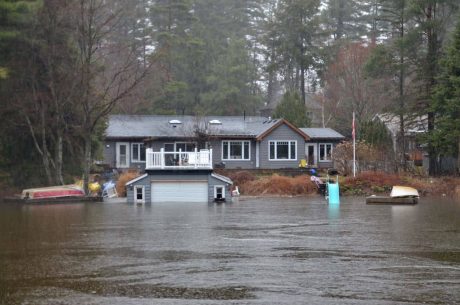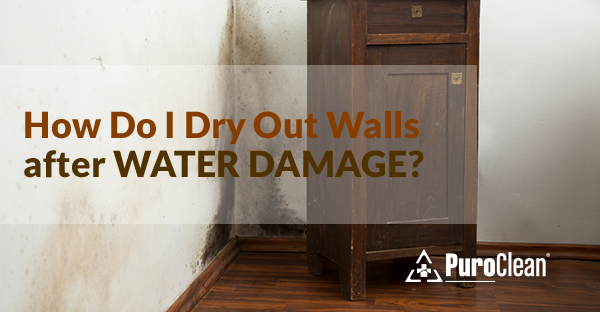Introduction
Severe weather events are becoming increasingly common, and with them come the devastating effects of storm damage. One of the most common and costly aftermaths of a major storm is water damage. Knowing what to do after a storm can save you thousands of dollars, protect your property, and prevent long-term issues like mold growth.
But how do you go from the chaos of a storm to complete restoration? That’s what we’ll break down in this guide. You’ll learn what storm damage looks like, how to respond quickly, the restoration process, and how to prevent future damage.
We’ll also share a story of a homeowner who faced severe storm damage, to help you relate to the challenges and the lessons that come from them.

Storm Damage Nightmare Turned Success: What Happened to Mark
Mark, a homeowner in Indianapolis, had always thought storms were “just rain.” But last summer, a violent thunderstorm swept through his neighborhood. The power went out, shingles blew off his roof, and by morning, his basement was filled with water.
Mark was overwhelmed. He didn’t know where to start, and mold began to appear within 48 hours.
That’s when he found a local professional water damage restoration company that specialized in post-storm disasters. The experts arrived with powerful water extraction equipment, industrial fans, and moisture meters. They walked Mark through the process step-by-step.
Fast forward two weeks, and not only was Mark’s basement restored, but the professionals also sealed vulnerable areas of his home to prevent future storm damage.
Lesson? Acting quickly after storm damage can save your home, your health, and your wallet.
Understanding Post Storm Damage: Why Water Damage Happens
Storms can cause multiple types of damage, but water damage is one of the most destructive for homeowners. After severe weather, water can enter your property through:

- Leaking roofs or broken windows
- Flooded basements due to rising groundwater
- Overflowing gutters and drainage systems
- Sewage backup from overloaded city systems
- Wind-driven rain penetrating vulnerable areas
The Hidden Dangers of Water Damage

If left untreated, water damage can lead to:
- Mold growth within 24 to 48 hours
- Warped flooring and drywall damage
- Electrical hazards
- Structural weakening
- Expensive property repairs
What to Do After Severe Weather: Step-by-Step Water Damage Restoration
1. Ensure Personal Safety First
- Avoid entering rooms with standing water if the electricity is still on.
- Wear protective clothing if you must enter a flooded area.
2. Document the Damage for Insurance
- Take clear photos and videos of affected areas.
- Record damaged furniture, walls, flooring, and personal items.
3. Contact Your Insurance Company
- Notify your insurance provider as soon as possible.
- Ask about coverage for storm damage restoration and water extraction.
4. Call a Professional Water Damage Restoration Company
- DIY may not be enough for significant damage.
- Professionals have commercial-grade dehumidifiers, drying equipment, and mold prevention treatments.
5. Begin Water Extraction Immediately
- Standing water must be removed fast to prevent structural weakening and mold growth.
6. Dry and Dehumidify
- Fans and dehumidifiers run for several days to ensure the area is completely dry.
- Restoration experts use moisture detectors to locate hidden damp spots.
7. Disinfect and Prevent Mold
- Mold spores love moisture. Professionals treat surfaces with anti-microbial agents.
- Pay special attention to carpets, walls, and wood surfaces.
8. Repair and Restore the Property
- Fix damaged drywall, flooring, and repaint as needed.
- Seal vulnerable parts of the home to prevent future leaks.
Quick Answers to Common Questions
- “What should I do if my home floods after a storm?”
→ First, ensure you’re safe. Turn off electricity, document the damage, and call a professional restoration company immediately. - “How long does water damage restoration take?”
→ It depends on the severity, but average restoration takes 3 to 7 days. - “Will my insurance cover storm water damage?”
→ Most homeowners insurance covers storm-related water damage, but always check your policy.
How to Prevent Future Storm Water Damage
- Install a sump pump in the basement.
- Clean gutters regularly to prevent water buildup.
- Waterproof your basement and foundation walls.
- Trim tree branches that could fall on your roof.
- Install backwater valves in drains to prevent sewage backup.
Why Professional Water Damage Restoration Matters
Trying to handle significant water damage on your own can be overwhelming and dangerous. Professional services come with:
- Expert knowledge and training
- State-of-the-art equipment
- Faster drying time
- Mold remediation expertise
- Direct insurance billing assistance
Companies like PuroClean Disaster Restoration specialize in helping homeowners recover quickly and safely after severe weather events. For immediate assistance with Water damage restoration, contact PuroClean Disaster Restoration, Call (+1) 317-467-4436.
PuroClean Disaster Restoration has over 19 years of experience in the water damage restoration industry, with over 100 5 Star reviews on Google serving Indianapolis. Click on this link to see it’s online reviews and ratings.
Frequently Asked Questions (FAQs)
1. How quickly should I act after discovering storm-related water damage?
Immediately. Water damage worsens by the hour. Mold starts forming within 24-48 hours. Contact a professional the same day if possible.
2. Can I use a household fan to dry out my flooded basement?
No, regular fans aren’t powerful enough. Restoration companies use commercial air movers and industrial dehumidifiers to pull moisture from walls, floors, and the air itself.
3. What are the first signs of mold after water damage?
- Musty smell
- Visible black or green spots on walls, ceilings, or furniture
- Peeling paint or wallpaper
- Allergic reactions like sneezing or itchy eyes
4. Will my homeowners insurance increase after a storm damage claim?
It depends on your insurance provider and the claim’s size. However, storm-related claims are generally considered “Acts of God,” and may have less impact on premiums than regular claims.
5. What should I avoid doing after a flood in my home?
- Don’t use electrical appliances in wet areas.
- Avoid using vacuum cleaners for water.
- Don’t delay contacting professionals. Waiting increases costs.
6. How do restoration professionals check for hidden moisture?
They use specialized tools like:
- Moisture meters
- Infrared cameras
- Hygrometers to measure humidity in the air
7. How long does it take for mold to appear after water damage?
Typically 24 to 48 hours. Quick action is essential to prevent mold colonization.
Conclusion: Protect Your Home and Act Fast After Storm Damage
Severe storms are unpredictable, but your response to the aftermath doesn’t have to be. Acting quickly, calling professionals, and preventing mold growth will save you from costly repairs later.
Just like Mark’s story, you don’t have to navigate the disaster alone. Partnering with experts like PuroClean Disaster Restoration ensures that your home is not only restored but also fortified against future storms.
Have you experienced storm damage? Don’t wait. Call your local water damage restoration expert today.


 PuroClean Disaster Restoration
PuroClean Disaster Restoration